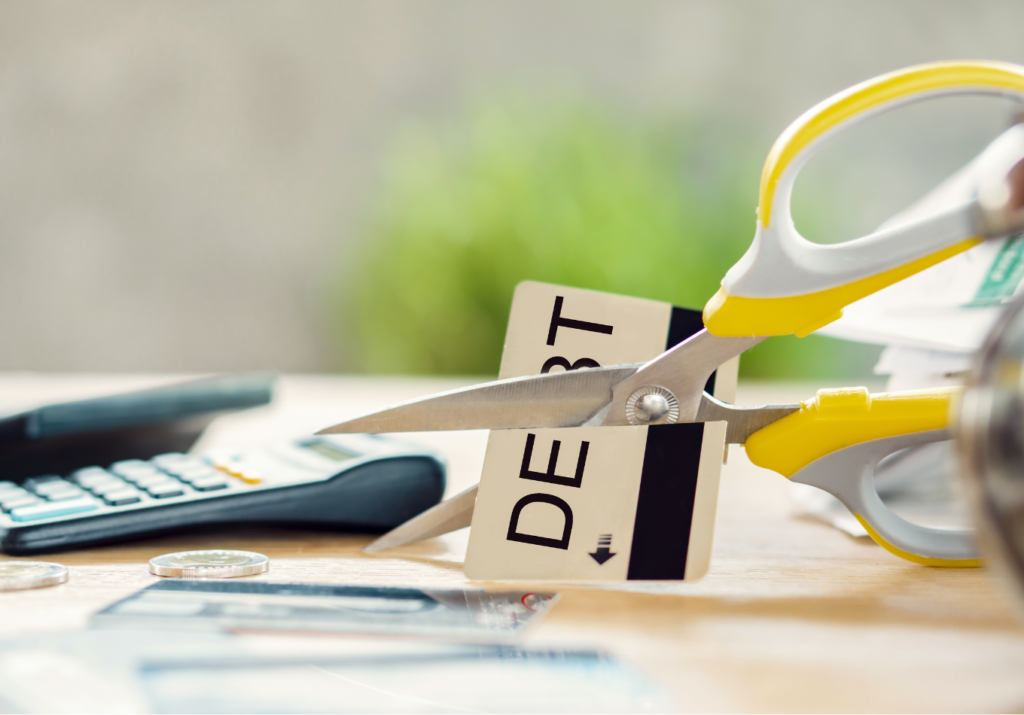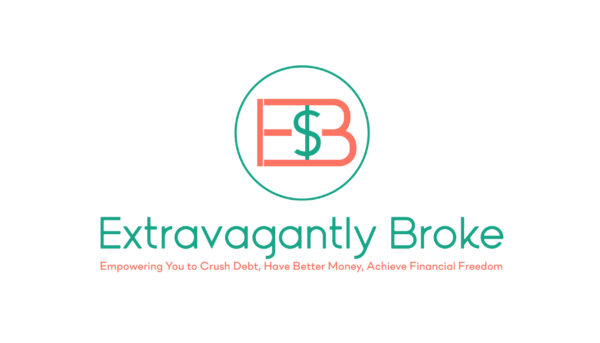Do your finances need a fresh start? If so, you’re not alone.
Every year, millions of Americans make resolutions to improve their financial situation for the new year. And I used to be one of them!
But within a month or two, I would fall into my same old spending patterns and end up right back where I started…nowhere!
Well, after years of that frustrating cycle, I finally had an eye-opening realization.
So, I stopped making resolutions and started taking action.
The trick is knowing where to begin.
Fortunately, I learned that all it takes is implementing a few simple steps right now that will give your money a fresh start this year and beyond.
Whether your goal is to pay off debt, save money, or simply get a better handle on your finances…
Wouldn’t it be great to make those dreams a reality?
Don’t let another year pass by without getting the finances and the life you want.
So, if you’re ready to finally make some progress and get a financial fresh start, keep reading!
Here are 5 simple steps to get you started:
Table of Contents
1. Reflect and Review

A key step that most people miss when they want to get their finances off to a fresh start is taking a look at the whole financial picture.
Start by reflecting on any financial goals you set last year.
Ask yourself, Did you achieve them? If not, what were the obstacles that stopped you?
Next, assess your current financial situation. That means getting a clear understanding of precisely how much money you have coming in and where the money is going.
- You should make a list of all your income sources and expenses. This includes your salary, any side income, bills, debts, and discretionary spending.
- Once you have this information, categorize your expenses into necessities, aka ‘must-haves’ (like rent, groceries, utilities), and non-essentials, aka ‘nice-to-haves’ (like dining out and entertainment).
Are there areas where you overspent? Can you identify areas where you can cut back?
Understanding your past actions can provide valuable insight into any unfavorable spending habits and allow you to make meaningful changes in the new year.

2. Be A Goal Getter

Being a goal-getter is another way to give your finances a fresh start. When you set goals, you begin to focus on what you truly want, and you make a strategic plan to achieve them.
Once you better understand your current financial situation, the next step is to create clear financial goals that you can realistically achieve.
Here, you start by thinking about what you want to accomplish financially this year. That could involve paying off a specific debt, buying a house, saving for a family vacation, or investing for retirement.
The key is to be specific and realistic.
That’s what makes SMART goals so great. The acronym stands for specific, measurable, achievable, relevant, and time-bound.
So, instead of simply saying, “I want to save more money,” create a specific goal like, “I want to save $3000 by the end of the year.”
Using this method makes it easy to keep track of your progress. For example, you should have $750 in three months and $1,500 in six to stay on target with your goal.
The cool thing is that if you fall behind, you can adjust your finances as needed to get right back on track.
It’s also good to have a mix of short-term and long-term goals.
- Short-term goals provide immediate satisfaction and motivation.
- Meanwhile, long-term goals ensure you’re setting yourself up for a financially stable future.
Ready to define your financial goals with clarity and precision? Schedule a free financial breakthrough call to explore how my 5-Step Financial Freedom Formula can guide you.
3. Budget Like You Mean It

Want a sure-fire way to a financial fresh start?
Then, you must, must, must learn how to manage your money effectively!
Your budget will be an essential part of helping you reach your money goals.
Here’s a great way to think about it…
If money is a tool to build your dreams…then a budget is the blueprint that outlines every step.
So, when you budget like you mean it — you take the time to understand, plan, and learn how to use money to your advantage so that your spending matches your goals. Here’s how:
- Lay everything out: Gather your bank statements, credit card bills, and open your mail. You have to get a clear picture of where things stand before you can truly solve the problem.
- List your expenses: One of the biggest reasons why people struggle with finances is because they have no clue where their money is going. Writing down your income vs. your monthly expenses allows you to face the reality and tackle bills strategically.
- Track your spending: Previously, people used checkbook registers and receipts to keep track of their spending. Now, there are personal finance apps, templates, journals, and spreadsheets. Whichever tracking method you use, make sure it fits your personality so that you will stick with it.
- Choose a budgeting method: Zero-based budgeting is the method I used when getting out of debt. It helped me to assign every dollar of my take-home pay a specific purpose so that I didn’t spend randomly and risk overspending.
- Review and adjust as needed: Budgets are not written in stone. They should be flexible and change as your income, expenses, or goals change. Choose a regular day and time each week to check on your money and make sure you’re on track. And remember to do it consistently.
Financial Freedom Fact: A budget is not about restricting your spending. It’s about making sure you’re spending in a way that aligns with your financial goals.
Related Post: 5 Reasons Why I Still Respect The “B” Word
4. Kick Debt To The Curb

I know firsthand that debt can seem like a serious roadblock when you want a financial fresh start.
However, tackling debt was a crucial step that helped me gain financial confidence and control.
The key here is not to let the debt scare or overwhelm you.
The very first step is similar to creating your budget.
- Start by listing all your debts – from credit cards to student loans.
Seeing everything in black and white can be difficult to face. Believe me, I’ve been there. But, it is a necessary step in the process to create a clear action plan.
- Next, choose a debt repayment strategy that resonates with you.
The snowball method allows you to pay off debts from smallest to largest, which can offer quick wins and help you build momentum.
Alternatively, the avalanche method focuses on eliminating debts with the highest interest rates first, which could save you hundreds or of thousands dollars overall.
Personally, I started with the snowball for the first couple of bills, then quickly moved to the avalanche because I couldn’t bear to see money wasted on interest.
- From there, tackle the debt one bill at a time. (That’s what I did. And before I realized it, bills were dropping out of my life like flies.)
However, once you pay off debt, you want to make sure you stay out of debt, right?
- So you must take a hard look at your old spending habits. And make the necessary changes to avoid falling back into the same traps.
This might mean temporarily cutting back on luxuries, finding additional sources of income, or seeking professional financial advice from a mentor or coach.
Remember, it’s not just about paying off what you owe but also understanding how you got there in the first place – and doing things differently this year.
5. Save Like Your Life(style) Depends On It (Because it does 😄)

I love a good play on words – but saving money is serious business.
Saving money is more than just a financial task. It’s a mindset!
It’s more than just buying specific things, like a house or a car.
It can give you the freedom to enjoy the life you deserve now while still preparing for the lifestyle you desire in the future.
This is where the importance of setting long and short-term savings goals comes into play.
At any given moment, an unexpected expense could arise. For instance, surprise car repairs, unexpected medical bills, or a busted water pipe.
But regardless of any of those events, rent is still due!
But now you’re short on cash.
So what will you do?
Turn to credit, borrow from friends, get a loan, or even worse, a payday loan?
All of those options can land you in a deeper financial hole and completely derail your fresh start.
- That’s why establishing an emergency fund is the best place to begin as a short-term goal.
Having this safety net will be a critical factor in decreasing your chances of spiraling back into debt.
The standard advice is to save at least three to six months’ worth of living expenses. But at the very least, you’ll need $1,000 readily available at all times.
- Once you’ve secured your emergency fund, you can focus on your long-term savings goals.
For instance, do you want to save for a house? Retirement? Your child’s education?
- If you want to make saving money easier, it’s best to automate the process.
You can start by setting up small automatic transfers, like $20, to your savings account every payday. This “out of sight, out of mind” approach can significantly boost your savings without you feeling the pinch.
Remember, every little bit adds up. So even if you start small, you’re still making progress toward a better fresh start with your finances compared to previous years, right?
The Bottom Line
Although resolutions may diminish as quickly as they are created — getting your finances off to a fresh start is more than just wishful thinking.
It’s about taking action.
To do that, start by…
- Looking back at your financial habits to get a clear picture of where you are now.
- Setting clear, achievable financial goals to guide you.
- Making a budget that works for you and using it as a roadmap for your financial success.
- Tackling your debts head-on with a plan that suits you best.
- Keeping savings as a top priority since it is an essential element for your long-term financial success.
And as you kick off your financial fresh start, it’s important to know that proper guidance and a strategic plan can work wonders!
So, if you need support setting clear, achievable financial goals and tailoring a personalized budget that aligns with them, schedule a Free Financial Breakthrough call.
This call is designed to give you actionable advice on the next steps you can take for your specific financial situation.
That way, another year doesn’t pass without reaching your financial dreams. Interested? Click the cool image below to get started! 👇








Hi, neat post!
I absolutely love your website.. Very nice colors & theme. Did you create this web site yourself? Please reply back
as I’m planning to create my own personal website and would like to learn where you got
this from or what the theme is named. Thanks!
Thank you! Yes, I did create it myself for free WordPress. I use Bluehost as my hosting platform. 🙂